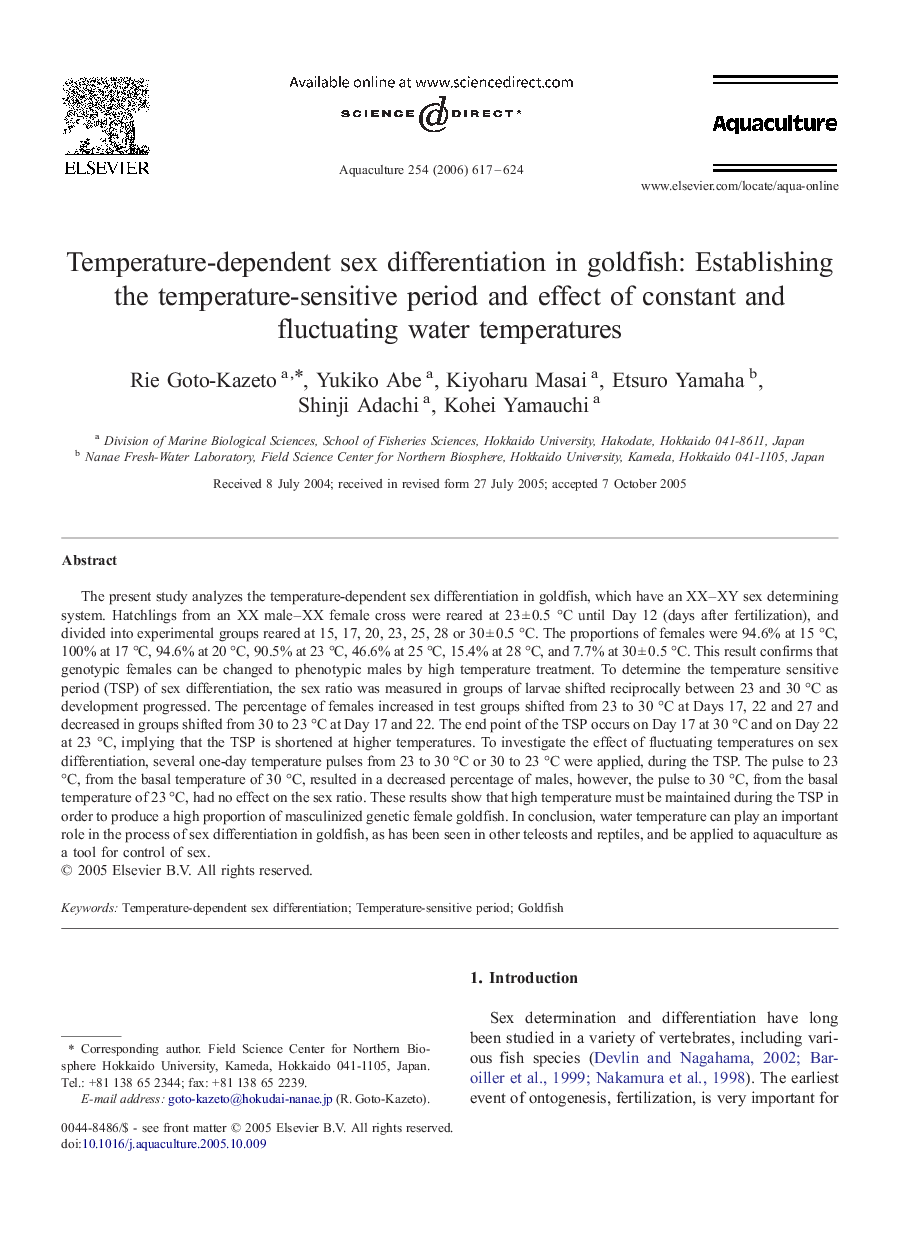| Article ID | Journal | Published Year | Pages | File Type |
|---|---|---|---|---|
| 2426032 | Aquaculture | 2006 | 8 Pages |
The present study analyzes the temperature-dependent sex differentiation in goldfish, which have an XX–XY sex determining system. Hatchlings from an XX male–XX female cross were reared at 23 ± 0.5 °C until Day 12 (days after fertilization), and divided into experimental groups reared at 15, 17, 20, 23, 25, 28 or 30 ± 0.5 °C. The proportions of females were 94.6% at 15 °C, 100% at 17 °C, 94.6% at 20 °C, 90.5% at 23 °C, 46.6% at 25 °C, 15.4% at 28 °C, and 7.7% at 30 ± 0.5 °C. This result confirms that genotypic females can be changed to phenotypic males by high temperature treatment. To determine the temperature sensitive period (TSP) of sex differentiation, the sex ratio was measured in groups of larvae shifted reciprocally between 23 and 30 °C as development progressed. The percentage of females increased in test groups shifted from 23 to 30 °C at Days 17, 22 and 27 and decreased in groups shifted from 30 to 23 °C at Day 17 and 22. The end point of the TSP occurs on Day 17 at 30 °C and on Day 22 at 23 °C, implying that the TSP is shortened at higher temperatures. To investigate the effect of fluctuating temperatures on sex differentiation, several one-day temperature pulses from 23 to 30 °C or 30 to 23 °C were applied, during the TSP. The pulse to 23 °C, from the basal temperature of 30 °C, resulted in a decreased percentage of males, however, the pulse to 30 °C, from the basal temperature of 23 °C, had no effect on the sex ratio. These results show that high temperature must be maintained during the TSP in order to produce a high proportion of masculinized genetic female goldfish. In conclusion, water temperature can play an important role in the process of sex differentiation in goldfish, as has been seen in other teleosts and reptiles, and be applied to aquaculture as a tool for control of sex.
